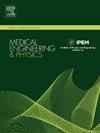血管医学中的下肢热模拟:使用计算机断层扫描图像进行概念验证
IF 1.7
4区 医学
Q3 ENGINEERING, BIOMEDICAL
引用次数: 0
摘要
基于病人特定解剖结构的生理学模拟在医学领域有多种潜在应用。放射治疗和神经生理学等少数领域已经在临床实践中使用了这种方法,但许多学科也可以从类似技术中获益,尤其是在已有成像数据的情况下。患者特异性模拟的主要问题是将数据转换为与模拟兼容的形式,即数据准备以及将基础物理学与解剖模型耦合。在这项工作中,我们以血管医学为背景提出了这样一种方法,它包括一个根据计算机断层扫描数据建立的下肢三维血流-温度模拟模型。我们还模拟了慢性肢体缺血的临床症状,这是外周动脉疾病的一种严重并发症。这个概念验证模型模拟了肢体表面温度与血管结构的关系。该方法描绘了准确的病人解剖结构,是血管医学向个性化生理模拟迈出的有希望的一步,但还需要更多的研究和验证。这种模型最终可以勾勒出对血管变化与外周热行为之间关系的更深入理解。本文章由计算机程序翻译,如有差异,请以英文原文为准。
Thermal simulation of the lower limb in vascular medicine: A proof-of-concept by using computed tomography images
Simulations of physiology based on patient-specific anatomical structures have several potential applications in medicine. A few fields, such as radiotherapy and neurophysiology already utilize such methods in clinical practice, yet a number of disciplines could benefit from similar technologies, especially when imaging data is already available. The major problem in patient-specific simulation is the data conversion to simulation-compatible form i.e., data preparation and the coupling of the underlying physics to the anatomical model. In this work we present such a methodology in the context of vascular medicine, consisting of a three-dimensional blood flow-temperature simulation model of the lower limb built from computed tomography data. We also simulate a clinical condition of chronic limb-threatening ischemia, a severe complication of peripheral arterial disease. This proof-of-concept model simulates the limb's surface temperature with respect to the vascular structure. The methodology, depicting accurate patient anatomy, is a promising step towards individualized physiological simulations in vascular medicine, although more research and validation are required. Such a model could eventually outline a deeper understanding of the relation between vascular changes and peripheral thermal behavior.
求助全文
通过发布文献求助,成功后即可免费获取论文全文。
去求助
来源期刊

Medical Engineering & Physics
工程技术-工程:生物医学
CiteScore
4.30
自引率
4.50%
发文量
172
审稿时长
3.0 months
期刊介绍:
Medical Engineering & Physics provides a forum for the publication of the latest developments in biomedical engineering, and reflects the essential multidisciplinary nature of the subject. The journal publishes in-depth critical reviews, scientific papers and technical notes. Our focus encompasses the application of the basic principles of physics and engineering to the development of medical devices and technology, with the ultimate aim of producing improvements in the quality of health care.Topics covered include biomechanics, biomaterials, mechanobiology, rehabilitation engineering, biomedical signal processing and medical device development. Medical Engineering & Physics aims to keep both engineers and clinicians abreast of the latest applications of technology to health care.
 求助内容:
求助内容: 应助结果提醒方式:
应助结果提醒方式:


